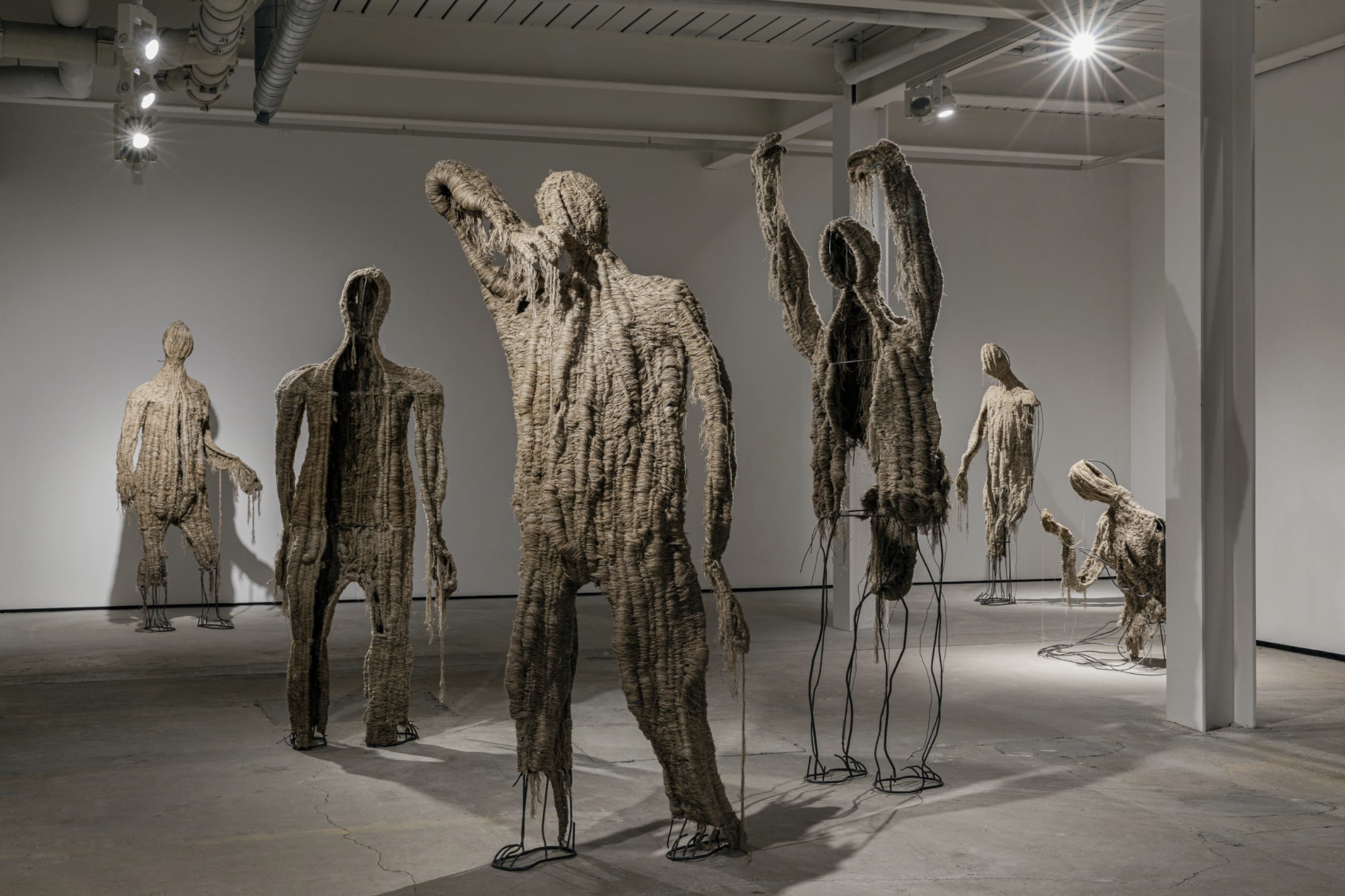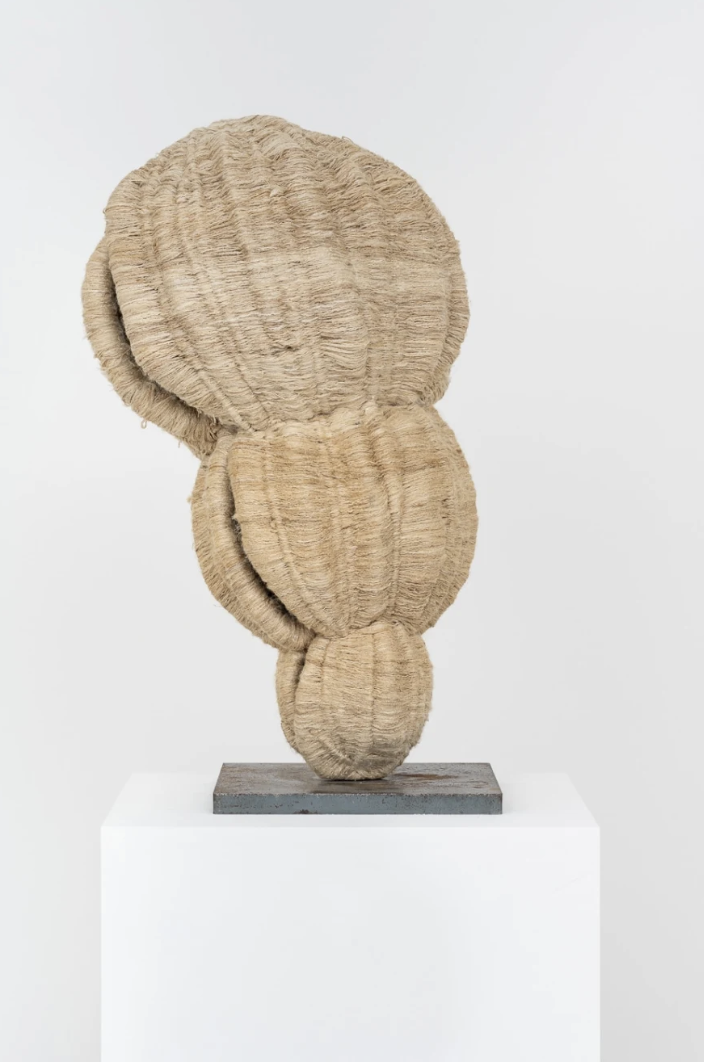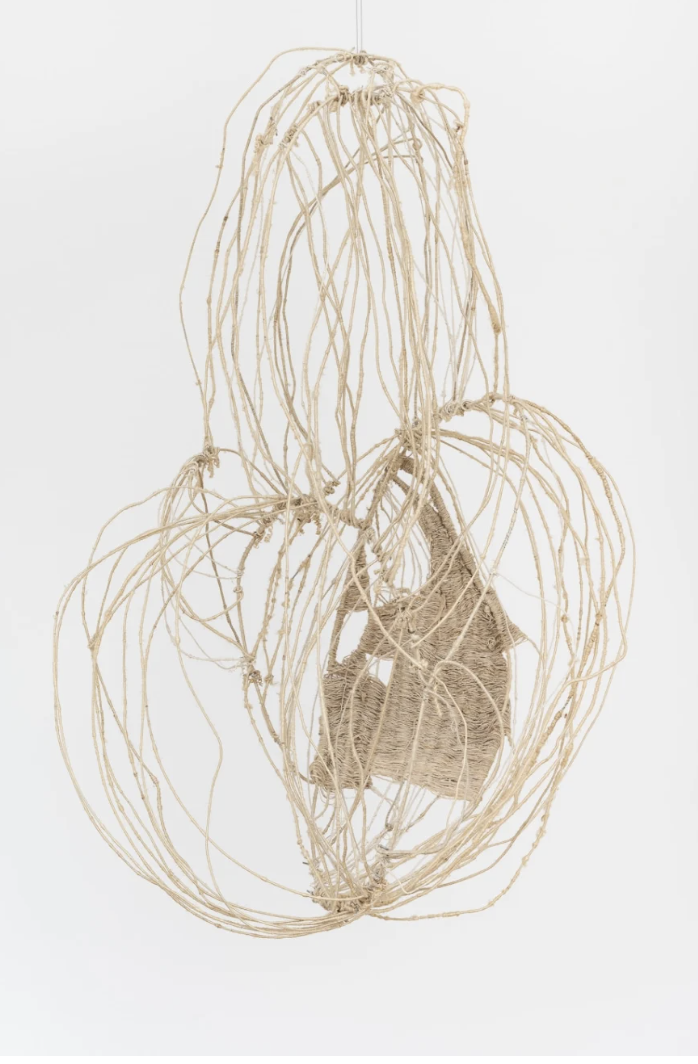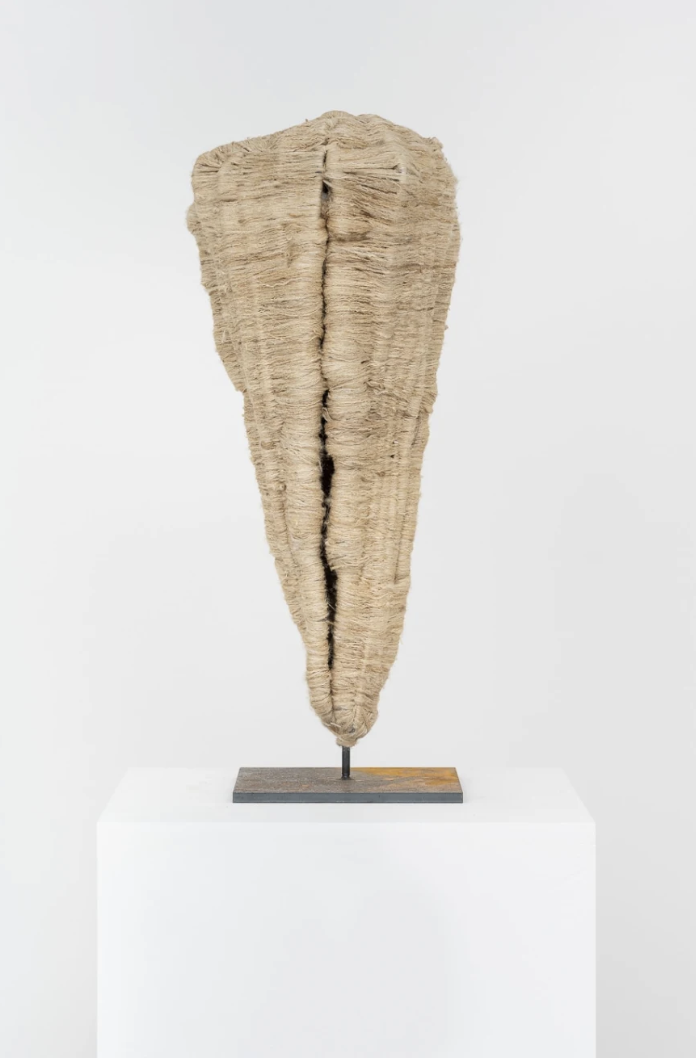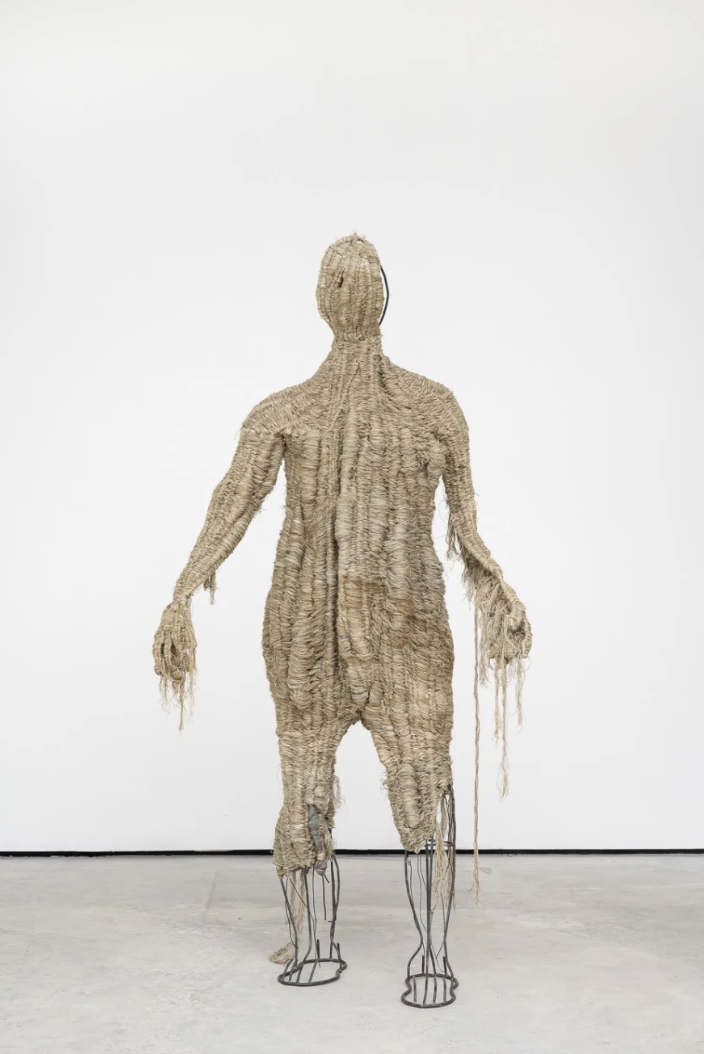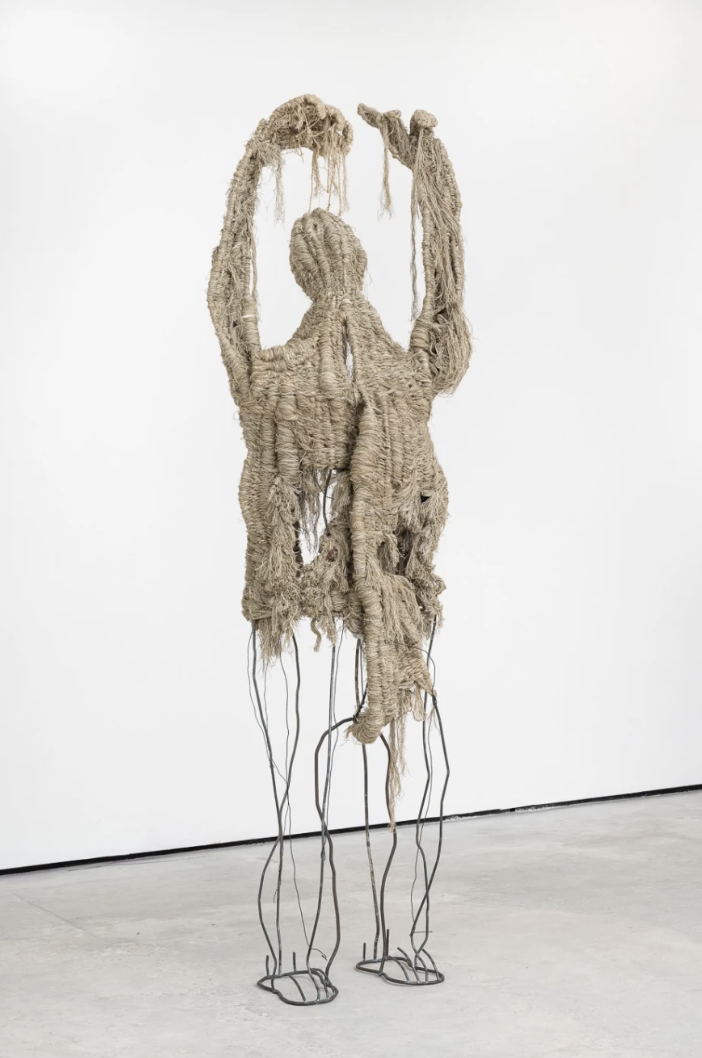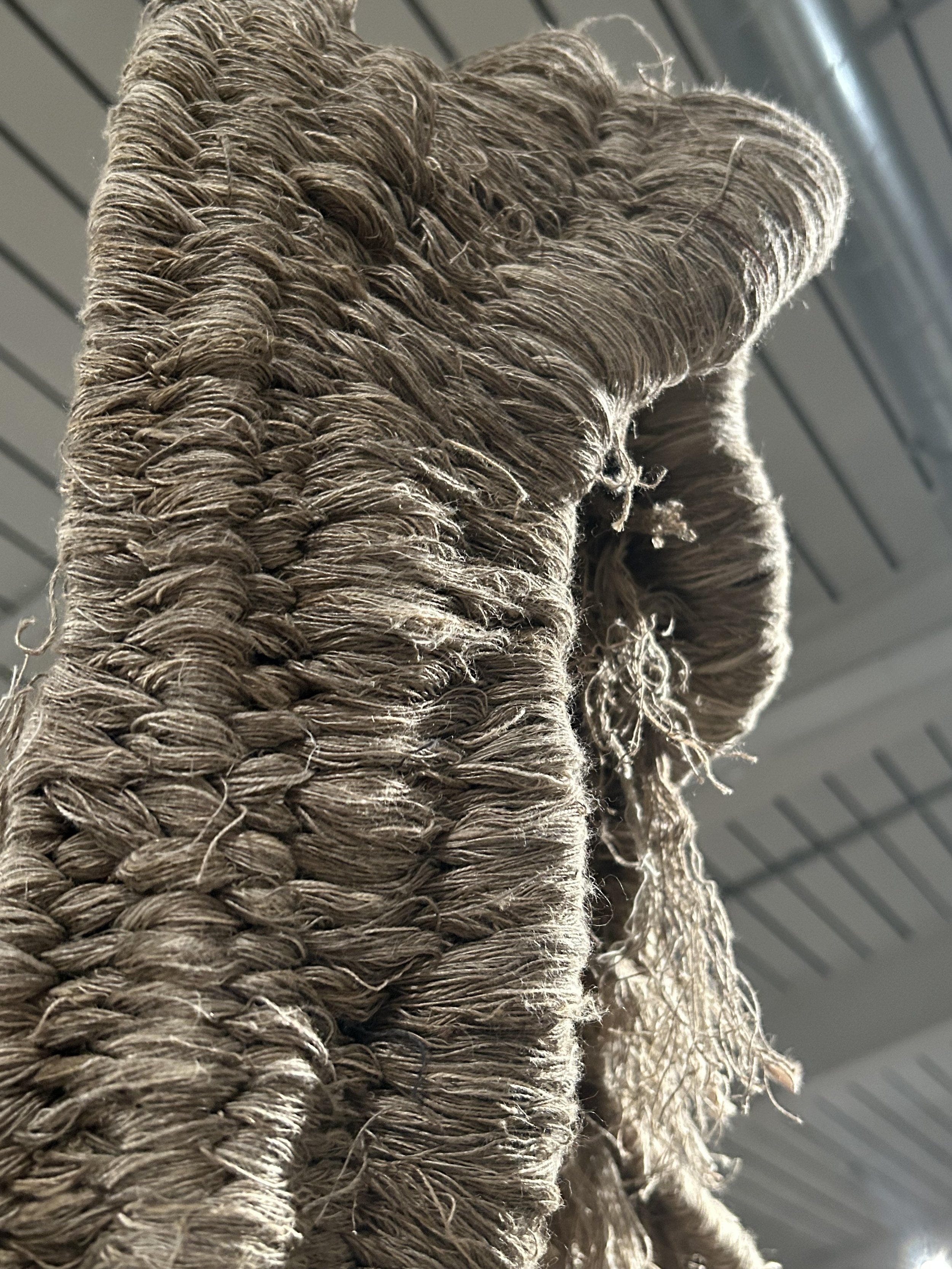Soojin Kang: TO BE YOU, WHOEVER YOU ARE @ Gathering London
Gathering presents a solo exhibition of Korean artist Soojin Kang’s textile sculptures. The exhibition, TO BE YOU, WHOEVER YOU ARE, explores the combination of complex textile techniques and natural materials to harness the animistic potential of thread to approach the human form.
According to Kang, using materials such as hand-dyed linen, jute, and silk becomes vascular, effectively acting as capillaries in generating vitality for the strange organisms emblematic of human figures. These sculptural forms appear frozen, captured in a moment in time, unravelling amid a cataclysmic decay.
Installation View. Photo Courtesy of Gathering.
The new body of work consists of a series that moves through various rooms in the gallery, guiding the audience on a journey to rediscover humanity and human nature. The entrance showcases busts and totems constructed from various fabrics wrapped, woven, bound and draped around steel armatures. As a result, this first room acts as an antechamber that continuously unfolds the story of human forms as one progresses through the space.
Here, intricate ritualistic movements of weaving, knotting, winding and unwinding that investigate the possibilities of sculptural practices. In creating seemingly familiar, yet totally alien forms, the artist transubstantiates raw materials into various biotic structures evoking humanity in its barest forms.
UNTITLED (BUST II), 2023, Metal armature, silk, linen, cotton, jute, hemp, 52 x 60 x 16 cm. Photo Courtesy of Gathering.
These isolated sculptures appear to be forgotten and abandoned, like the ruins one might find in an ancient sanctuary - once revered and whole but now decaying, offering a glimpse into how organic organisms decay. For example, UNTITLED (ARM) (2023) depicts a hand reaching up to the skies, the fabric dense at the fingertips before tapering off to reveal the steel armature of the two forearm bones. This dynamic of intense weaving interspersed with the steel structures lends a critical dimension to the exhibition’s theme of exposing oneself.
UNTITLED (ARM), 2023, Metal armature, silk, cotton, jute, hemp, 22 x 76 x 12 cm. Photo Courtesy of Gathering.
All the sculptures are on white plinths, which foreshadow the proportions of the bodies to come in the lower level of the gallery. The artist asserts that the pieces ‘look as if it’s been there forever,’ eliding organism-like ancient statue fragments and artefacts.
Continuing on the first floor towards the back to a more secluded room that contains more biotic forms, such as shells, pods, totemic shapes, and a hive hanging from the ceiling, confront the viewer to draw parallels between humans and organic and the natural and synthetic. A spectral anticipation develops as viewers walk past each work, reminiscent of what one feels when walking through a ruin or shrine.
Moving downstairs, the viewer starts to take in the whole woven bodies and forms tangled together in a poetic ensemble. Kang boldly presents intertwined bodies, the forms’ sinew stretched and contorted, encouraging the viewers to step back and take in the entire ground-floor dynamic. Simultaneously, the intricacies of the braids and organic structures demand closer inspection, urging viewers to appreciate the depth of the artist's craft.
The sculptures are larger than life-size, which consequently crowds the space entirely. Thus, the viewer becomes subsumed and small, compelled to reconfigure how one navigates and occupies the exhibition room. To explore and see all the work on display, one must strategically navigate the space and weave in and around the bodies to find their footing. What occurs is an echoing effect that further foregrounds the relationship between woven textiles, human bodies and the fabric of life.
TO BE YOU, WHOEVER YOU ARE (FIGURE V), 2023, Metal armature, silk, linen, cotton, jute, hemp, 115 x 65 x 140 cm. Photo Courtesy of Gathering.
These larger sculptures are devoid of any recognisable facial features and appear more humanoid than humans; they visualise, on a larger scale, the deterioration of entities behind Kang’s work. As seen in FIGURE IV (2023) and FIGURE VII (2023), the bodies portray distinctive moments of disintegration, with frayed edges and knotted threads. The metal framework extends into vertebrae, with the textiles strategically wrapped around to infer skin, hair, bones, and muscles.
Despite the sculpture's imposing scale and impassive appearance, the bodies convey a sense of vulnerability. Fibrous growths extend from the torsos, while delicate threads hang from their heads. There is a distinction between the inside and outside, the messy and fragile, blurred boundaries, and emotions embodied in their physical forms. The artist experiments with the lexicon used in weaving to create these giant, ‘overgrown, lichenous beings.’ Kang’s work highlights the repetitive, hand-laboured textile production that results in these unruly sculptures, subverting the historical role of weaving as an art form.
Consequently, Kang acknowledges the traditional association of weaving with femininity and the care and contemplation it entails. However, she also challenges these notions by exploring what she describes as ‘the minor and hidden’ to create a new and innovative form of monument.
The exhibition demonstrates Kang’s exceptional aptitude for manipulating textiles and constructing divisions – between the natural and synthetic, human and organic, familiar and foreign, interior and exterior – presents a unique challenge in distinguishing between the two factions. Thus, Kang’s weaving actions explore more than the possibility of textiles, exposing the vital forces and sinew of deterioration. While these presences might provoke unease in some, these sculptures demand the viewer’s recognition; that they, like humans, are creatures of eventual decay and incompletion.
Soojin Kang: TO BE YOU, WHOEVER YOU ARE, is on display at Gathering Gallery until June 17, 2023.
Bibliography
Soojin Kang: TO BE YOU, WHOEVER YOU ARE Press Release Courtesy of The Gathering Gallery.
Kendra Lee
Co-Review Editor, MADE IN BED



